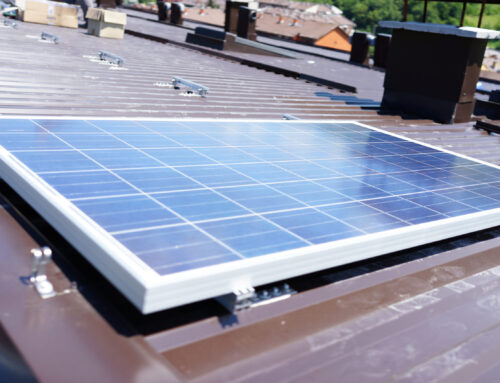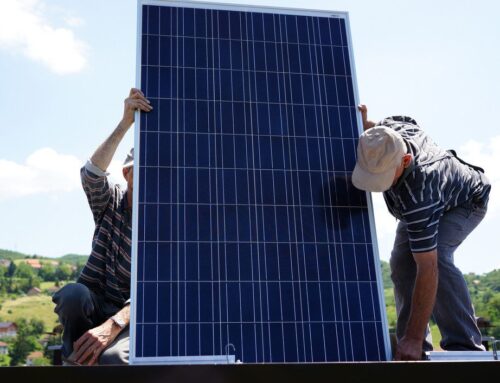Solar electricity is a clean and renewable source of electricity that is a big part of current efforts to move away from coal-fired power generation. According to EnergySage, it can provide power 24 hours a day, seven days a week. Many homeowners want to learn how solar energy might power their homes and reduce dependence on aging electrical grids. Storing solar energy helps you to enjoy the benefits of solar power all day, every day. Let’s examine how solar panels create storable solar power.
Sunlight Creates Energy
Any fan of Star Trek is familiar with photon torpedoes. The sun’s rays contain photons, although they are not powerful enough to destroy a fictional starship. Photons are very real, and a solar system uses solar panels to capture photons and convert them into electrical energy. When the photons strike a solar panel, they cause electrons to escape the silicon atoms that the panel contains.
Freely Moving Electrons Create an Electrical Current
When the electrons are freed from the silicon atoms that contain them, they create an electrical current. Some electrons have positive charges, while others have negative charges. Those charged electrons pass through the various layers of the solar cell within the panels of the solar system. Once they create an electrical current, that current flows to the outer edges of the solar panel and reaches a wire that conducts it away from the panel.
Inverter Creates an Alternating Current
When the electrical charge exits the panel via the conductive wire, a direct current flows to the inverter. The inverter converts the current from a direct current into an alternating current that can give your home power for its electrical needs. That power flows to the building to provide electricity.
Electric Meters Often Run Backward
As the electricity from the solar panels enters your home, it passes through the power meter. That meter will run backward while the solar-generated electricity enters your home. The backward-running meter shows your solar system is adding electricity to the local power grid instead of drawing power from it. Depending on where you live, your local utility might pay for that power.
If you are considering adding solar panels to your home, you can contact Suntegrity Solar to learn more about how a home solar system works and how much power you can get for your home. We can give you a free estimate of the cost to install solar panels and provide you with useful electricity throughout the year.


 Solar Company
Solar Company 



